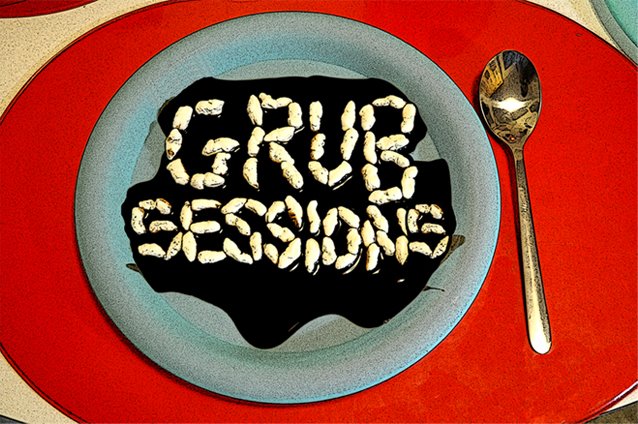 photo by Nick Koenig
photo by Nick KoenigGrub Sessions with Niia
We are proud to present our latest Grub Sessions installment featuring the talented and captivating crooner, Niia. Those already familiar with her name and voice from Wyclef Jean's single, "The Sweetest Girl (Dollar Bill)," also featuring Akon and Lil Wayne, might be surprised to learn that Niia is an accomplished pianist and vocalist with roots in jazz and classical music. She was selected by the National Foundation for the Advancement of the Arts as one of the top 100 singers in the country and was the national winner in the Jazz voice category National Foundation for Advancement in the Arts Recognition and Talent Search. Niia's debut album promises to combine her jazz and classical strengths with crisp pop production. Niia was kind enough to play us three songs which may appear on her upcoming release: "Learn My Body," "The Land Beyond," and "Neck-Tie Social." Afterward she sat down with us to discuss her album, the music industry, technology, and more - while we ate some delicious Chilean Sea Bass with Corn-Avocado Salsa and Zucchini Fritters.
- Jed I. Rosenberg
Grub Sessions with Niia Part 1
Grub Sessions with Niia Part 1 from Jed I. Rosenberg on Vimeo.
Directed/Edited by Jed I. Rosenberg
Produced by Megan Conway; Jed I. Rosenberg
Shot by Ethan Blum; George Robert Morse
Production Sound/Stills Photography by Nick Koenig
Cooking by Megan Conway
Interview by Jed I. Rosenberg
"Learn My Body" features Niia on vocals, Brandee Younger on harp, and Travis Rosenberg on guitar.
Chilean Sea Bass with Corn-Avocado Salsa and Zucchini Fritters Serves 2
For the sea bass:
2 fillets of Chilean sea bass (about 8 oz. each)
1 tablespoon olive oil
Salt and freshly ground black pepper
For the corn-avocado salsa:
1/2 can of corn (preferably Del Monte)
1 avocado, firm but ripe, diced large
1 small red onion, chopped small
½ red bell pepper, chopped small
Small bunch of fresh cilantro, chopped
2 tablespoons olive oil
1 tablespoon red wine vinegar
2 garlic cloves, minced
Dashes of hot sauce to taste
2 teaspoons ground cumin
1 teaspoon chili powder
Lime juice from 1 lime
Salt and freshly ground black pepper
For the fritters (NOTE: this makes extra fritters, about 12):
2 medium zucchini
About 2 cups crumbled feta cheese
3 scallions, minced
2 eggs, lightly beaten
1 garlic clove, minced (or 2 teaspoons garlic powder)
6 tablespoons olive oil
½ cup all-purpose flour
1 lemon
Salt and freshly ground black pepper
First, you’ll want to make the corn-avocado salsa and let it sit in the fridge for at least an hour to mix the flavors. Add the corn to a medium bowl after straining out the liquid from the can. Add the remaining ingredients and stir to mix. Cover the bowl and put in the fridge.
For the fritters, preheat oven to 200 degrees. Shred the zucchini on the large holes of a box grater. Toss the shredded zucchini with salt in a strainer and let drain for 10 minutes. After 10 minutes, wrap zucchini in paper towels and squeeze out excess liquid. (NOTE: it’s very important to squeeze out as much liquid as possible, or the fritters will fall apart in the frying pan.)
Combine dried zucchini, feta, scallions, garlic, salt, pepper, and eggs in a medium bowl. Sprinkle flour over mixture and stir everything together.
Heat 3 tablespoons of olive oil in a 12-inch nonstick skillet over medium heat. Drop 2-tablespoon-sized portions of batter into the pan and press with the back of a spoon to make the spoonfuls flat like little pancakes. Fry until golden brown, about 2-3 minutes on each side. You can probably fit about six in the pan; when the first batch is done, put the fritters on a plate with paper towels to drain excess oil, add the remaining 3 tablespoons of oil to the pan, and fry up the second batch. When the fritters are cooked put them on a baking sheet in the oven to keep warm until ready to serve.
For the fish, sprinkle both sides of the fillets with salt and pepper. Heat up 1 tablespoon of olive oil until almost smoking in a medium skillet. Place the fillets skin-side down in each skillet and cook for about 7 minutes, until the skin is crisp and brown and the fish starts to turn opaque. Carefully flip the fish and cook on the other side until a nice brown sear appears and the fish is opaque and slightly firm to the touch. (NOTE: if you have a grill, use it for the fish. This is yummier.)
Serve the salsa over the fish and 2-3 fritters per person on the side. Cut the lemon into wedges and use for the fritters. Bon Appetit.
Inspiration for corn-avocado salsa from Cook’s Illustrated; Zucchini fritters recipe from Cook’s Illustrated.
- Megan Conway




















